At the International Center for Spinal Cord Injury, we believe innovation and technology are key components of our advanced treatment and rehabilitation programs. Our state-of-the-art therapy center, medical clinic, and aquatic therapy center are equipped with a variety of rehabilitative and diagnostic equipment that we use together with expert hands-on treatment.
Learn More About the Technology Components of Our Therapy Center
Click on each item to learn more
Electrical Stimulation Bicycles

These specialized bikes stimulate the muscles of the lower or upper limbs so you can use your own strength to power the bicycle. Riding an FES bike simulates the physical activity that a person normally experiences during an average day. Cycling for one hour is equivalent to walking 6,000 steps.
Neuromuscular Electrical Stimulators
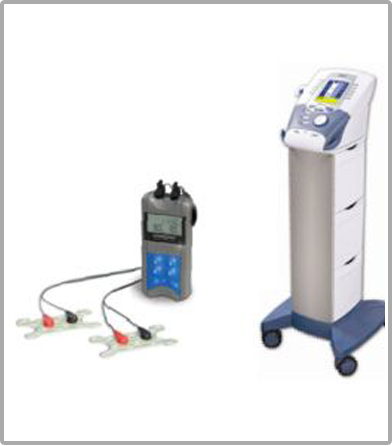
Therapists use this device on specific muscle groups to help you perform tasks such as trunk training and lower extremities movement. FES works by having a computer send electrical messages to a person’s muscle, causing it to contract in a way that can be used for purposeful movement, such as grasping an object. Electrical stimulation is often used in combination with other equipment and our traditional hands-on therapy.
Ekso Robotic Exoskeleton
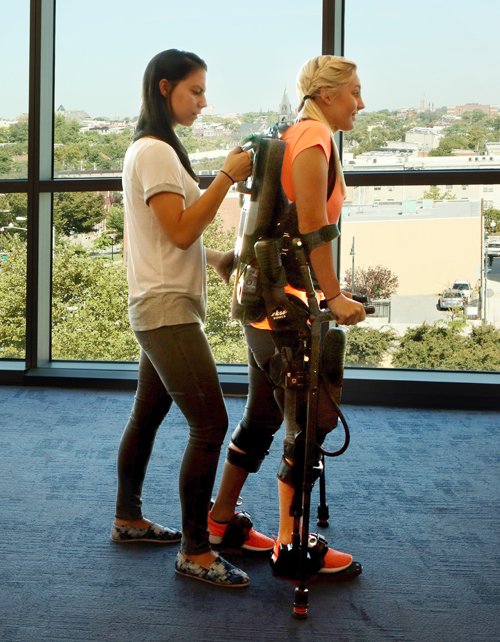
This wearable robotic suit is designed to help you get back on your feet and supports re-learning correct step patterns and weight shifting.
The exoskeleton is a battery-powered bionic device that enables people with lower extremity weakness and/or paralysis to return to standing and walking. This advancement in technology allows our patients to participate in gait training. An upper extremity system is also available.
The exoskeleton offers:
- Custom settings to meet the needs of a wide range of patients
- Gait adjustment to provide our patients the best environment for success
- Real-time patient performance data sent to the therapist
When using the exoskeleton, patients have the means to walk. In addition, the exoskeleton can be used as an adjunct to our gait training therapies. The experts at ICSCI anticipate that the exoskeleton will become an important tool in their activity-based restorative therapies.
Therastride
Relearn walking with this system that supports some or all of your weight while the therapists move your lower limbs over a treadmill through the proper gait pattern.
AMADEO AR7
The AMADEO, a robotic-and-computer-assisted theraepy device for your fingers and hands, simulates the natural grasping motion and executes automated movement sequences that can be achieved both actively and passively depending on your treatment needs.
Armeo Spring System
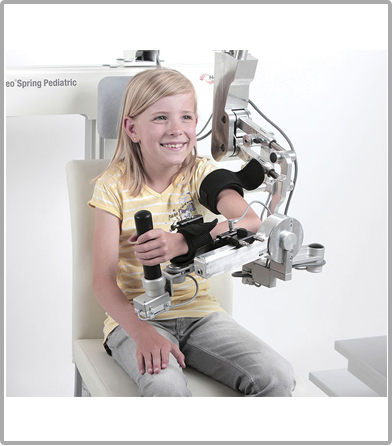
This system embraces the whole arm, from shoulder to hand, and counterbalances an adjustable part of the weight of the patient's arm in order to enhance residual function and neuromuscular control. Various self-initiated repetitive therapies help increase your range of motion and selective control.
Aretech ZeroG Gait and Balance system (Maple Lawn only)
The dynamic body-weight support of ZeroG compensates for weakness and poor coordination permitting intensive therapy sessions earlier in recovery. Patients aren’t inhibited by the fear of falling and have the confidence to push their limits.
Bioness L300 Go
L300 Go is a functional electrical stimulation (FES) system capable of producing measurable mobility improvements for patients with foot drop and/or knee instability or thigh weakness.
BTS G-Walk
A wireless system of sensors that allows for an objective functional gait analysis that provides accurate, objective and quantitative data to help us improve your treatment and motor capabilities.
Bioness Balance System SD
The Biodex Balance System SD has been designed to meet the needs of everyone looking to improve balance, increase agility, develop muscle tone and treat a wide variety of pathologies. The Balance System SD also serves as a valuable training device to enhance kinesthetic abilities that may provide some degree of compensation for impaired proprioceptive reflex mechanisms following injury. Using this unique device, clinicians can assess neuromuscular control by quantifying the ability to maintain dynamic bilateral and unilateral postural stability on a static or unstable surface.
ForeSite SS Tablet Wireless Seat System
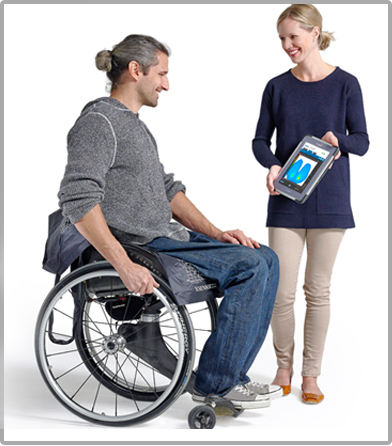
This system is used in the Seating Clinic to measure body surface pressures, a key factor in the development of pressure ulcers, in order to help improve your current seating system performance or evaluate a new seating system that will best meet your needs.
Galileo Delta A Tilt Tables with Vibration
The Galileo Delta series enables users unable to stand to benefit from the therapy success with Galileo. The primary therapy targets are the improvement of the muscular status of the legs and trunk, the alleviation of contractures and the stimulation of blood circulation. The motor driven adjustable tilt angle of the Galileo Delta TiltTable (90°) allows vibration therapy with reduced body weight from 0 to 100%.
G-EO System
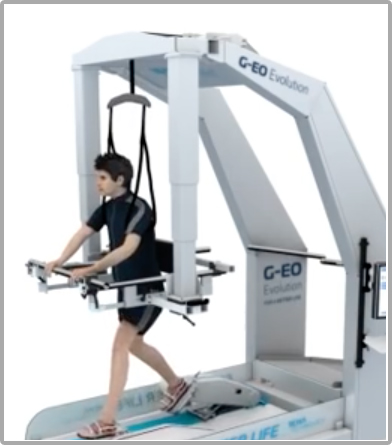
People with lower extremity weakness or paralysis can recover mobility and independence in daily living by performing realistic simulations of activities like over-ground walking and going up and down stairs. When using the G-EO, therapists can provide real-time adjustments in a safe and controlled environment to maximize the benefits of the equipment for you.
Hocoma Andago
The Andago V2.0 provides therapists with a versatile tool for overground gait training, bridging the gap between treadmill-based and free walking. The Andago utilizes mobile robotic technology to sense the patient’s movement intention and actively follow, while providing dynamic body weight support.
Hypoxico Altitude Training system
Hypoxico equipment delivers highly controlled low-oxygen or high-oxygen air and can used for a variety of therapeutic applications. Due to the fact that the state of hypoxia -or exposure to low oxygen air-can create increased capillarization, this provides greater oxygen delivery to the tissues, muscles and brain, along with a decrease in average heart rate and blood pressure, which helps with stimulating the metabolism of fat.
Litegait
Supportive partial weight bearing environment that provides postural stability and biomechanically correct posture while helping patients improve and retrain their gait patterns.
Meditouch 3D Tutor
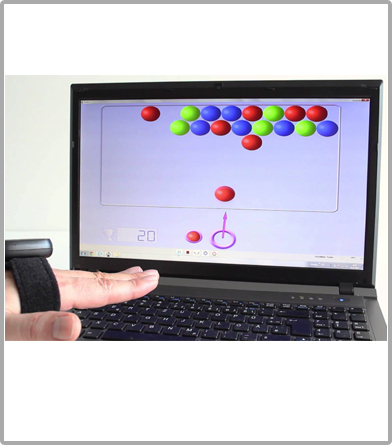
With a wearable wireless motion feedback device and dedicated physical therapy rehabilitation software, the Meditouch 3D provides functional rehabilitation of the upper and lower extremities. The bio-mechanical data gathered from the device allows your therapist to objectively evaluate any further physical therapy treatment needs.
Meditouch Hand Tutor
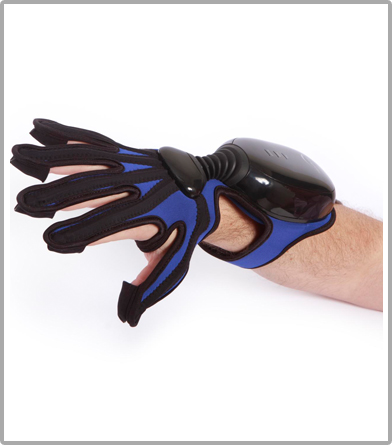
This glove and software system gives hand biofeedback and challenging games to motivate patients to continue intensive, repetitive fine motor finger and wrist exercises.
MediTouch Arm Tutor
The arm brace and dedicated rehabilitation software is designed for elbow and shoulder exercises in the form of challenging games. The system provides precise feedback on your exercise performance and improvement.
MediTouch Leg Tutor
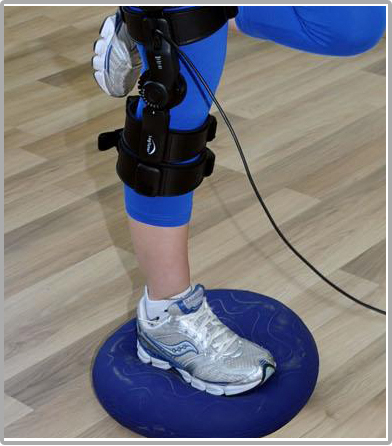
A leg brace and dedicated rehabilitation software allow you to perform weight-bearing and non-weight-bearing activities designed as challenging games so you can practice knee and hip movement. The system gives precise feedback on your exercise performance and improvement.
Myomo MyoPro
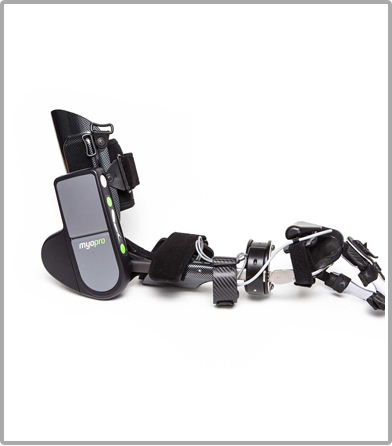
This myoelectric elbow/wrist/hand-powered brace supports an impaired hand and arm while also enabling it to move again. You use your own muscle signals to control your arm movements. When you try to bend your arm, or open and close your hand, precision sensors in the brace detect the weak muscle signals, which activates motors to move the hand and arm in the desired directions. You completely control your own hand and arm, but the brace amplifies the weak muscle signal to help move the limb.
Standing gliders
Stand and work on trunk balance while also learning how to bear weight through the lower extremities and improve cardiovascular endurance.
SaeboMAS dynamic mobile arm support system
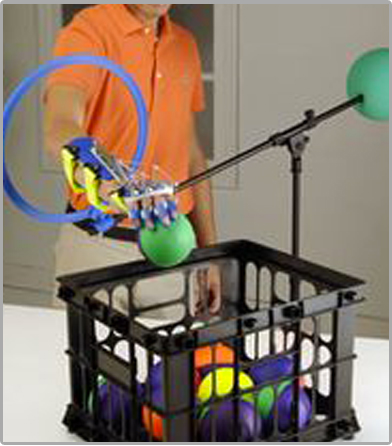
This zero-gravity, upper extremity device is specifically designed to facilitate and challenge the weakened shoulder and elbow during functional tasks and exercise drills. The mobile arm support can help improve decreased upper extremity function, improve your motor skills and muscle coordination and support re-learning of specific movements.
Tobii PCEye Gaze System
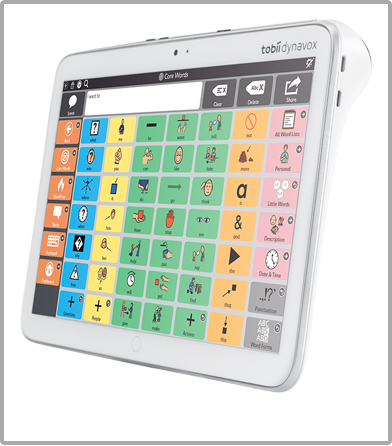
This device replaces a mouse for those who have upper extremity weakness that makes using a computer mouse difficult. You learn how to quickly and accurately control the computer using only your eyes.
Tyromotion Pablo Upper Extremity system
The Pablo is a sensor-based rehabilitation device that assesses upper extremity function and range of motion, while also providing interactive therapies for the hand, arm, shoulder and trunk.
Vectra Neo
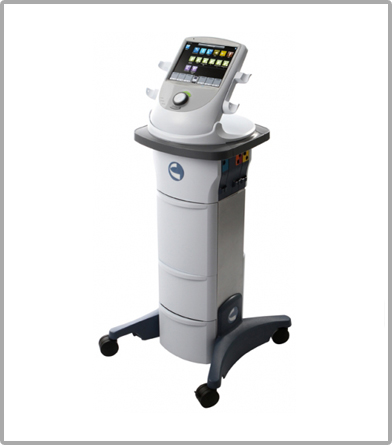
Offering multiple therapies on one machine, the Vectra Neo has five plug-and-play modules, four channel electrical stimulation, ultrasound, EMG biofeedback, and EMG-triggered stimulation and laser options.
Vibration Plate
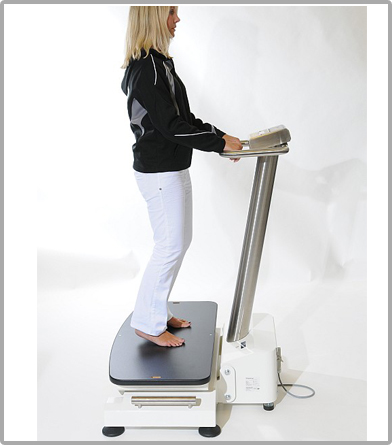
Utilizing Whole Body Vibration (WBV) technology, this equipment imitates mechanical strains on the bone that occur during physical activity. The vibration plate is mounted to a supported stander for people who may have trouble standing on it safely and independently. WBV can temporarily suppress spasticity and potentially improve walking function by increasing step length and walking speed.
Virtual Reality System

You can participate in various activities from simply looking at a landscape to actively participating in games, including those on an adaptive Xbox controller and system, that engage you and encourage a variety of muscle movements.
Vmax Encore Metabolic Cart
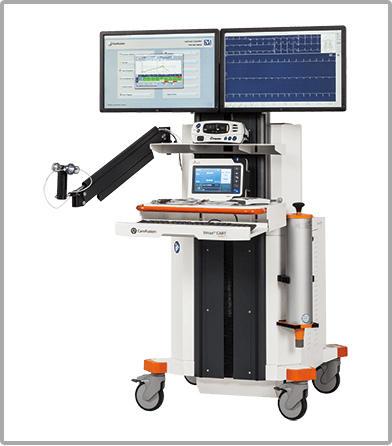
The cart provides cardiopulmonary stress testing and indirect calorimetry testing for both children and adults in our wellness and nutrition programs.
Learn More About the Technology Components of Our Medical Clinic
Clavis EMG/STIM
The device is used in the medical clinic to provide muscle and nerve localization information wherever needed to accurately guide and monitor injections, while also providing EMG recordings with audio and electrical stimulation.
Ultrasound Imaging
Ultrasounds accurately guide and monitor injections and provide diagnostic images.
Horizon DXA System
With advanced imaging to detect bone fractures and assess bone health, our physicians can help patients prevent or reduce the risk of future fractures.
Aquarius LT Urodynamics Unit
Tests how well the bladder, sphincter, and urethra hold and release uring. These tests can show how well the bladder works and why there could be leaks or blockages.
Learn More About the Technology Components of Our Aquatic Therapy Center
Our aquatic therapy program features two state-of-the-art pools with a range of warm water temperatures and therapeutic treatment options. Our pools are equipped with various technologies including:
- Built-in treadmills with a wide range of speeds for retraining patients to walk.
- Video and camera systems for monitoring therapy activities and observing walking patterns.
- Multiple jets used for resistance training.
- Movable floors that allow us to customize the water height to you. If you are in a wheelchair, these movable floors also allow you to enter and exit the pool with no barriers.
